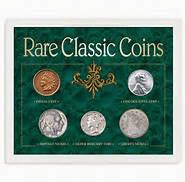Philip went with his army to the Euphrates, leaving his brother Prisco, to oversee the East from Antioch. He arrived in Rome in the late summer of 244, the city where he would remain until 245 when it began military operations in the Danube region where the defeat of the Roman army in the East and the change of emperor had decided to try various Germanic people to attack. Some wins he would stabilize the situation and return to Rome in 247 to combine the celebration of their successes with the festivities in honor of the anniversary of the foundation of the city the following year (248 AD).
In fact, we have no direct evidence on the nature of the celebrations, but these must have been notable as Philip did coin both in his name and in that of his wife and child, an extensive series of coins in all metals allusive to spread the news around the imperial territory. Reverses have MILIARIVM legends SAECVLVM SC, SAECVLVM NOVVM SC, SAECVLARES AVGG and reversals among other reasons, a number of different animals, in all probability, made their appearance in the shows at the amphitheater and the classic representation of the wolf suckling the twins.
Even in today, the coins are still available which were once used as the main currency of the time. So you can get any of the old coins in their original state. You can get mint proof coin sets online as well.
The huge payment to the Persians, plus the cost of the celebration of the anniversary of Rome and the ambitious building program Philip further aggravated during his reign in the Empire's fiscal plight. To address this situation, Philip turned to the same file as its predecessors further deteriorating the quality of the coins.
The End of Philip
The festive mood does not last long. In the last months of 248 AD, a revolt broke out in the area of the Danube, directed by Ti. Claudio Marino Pacatiano. Although the usurper was quickly overthrown by his own troops, the situation would have been seen by some Germanic tribes as an opportunity to renew their attacks. Philip sent to C. Fifth Mesio Decius, a senator of distinguished military career to the region to restore the order and expel the barbarians. In May or June of 249, his troops proclaimed him emperor allegedly against his will.
The new revolt was a bad news for Philip who was facing serious financial problems. The Emperor moved to northern Italy to face the new usurper leaving Rome to his young son, whom he had associated on the throne. The armies met in Verona in August or September 249 where Philip was defeated and killed.
In fact, we have no direct evidence on the nature of the celebrations, but these must have been notable as Philip did coin both in his name and in that of his wife and child, an extensive series of coins in all metals allusive to spread the news around the imperial territory. Reverses have MILIARIVM legends SAECVLVM SC, SAECVLVM NOVVM SC, SAECVLARES AVGG and reversals among other reasons, a number of different animals, in all probability, made their appearance in the shows at the amphitheater and the classic representation of the wolf suckling the twins.
Even in today, the coins are still available which were once used as the main currency of the time. So you can get any of the old coins in their original state. You can get mint proof coin sets online as well.
The huge payment to the Persians, plus the cost of the celebration of the anniversary of Rome and the ambitious building program Philip further aggravated during his reign in the Empire's fiscal plight. To address this situation, Philip turned to the same file as its predecessors further deteriorating the quality of the coins.
The End of Philip
The festive mood does not last long. In the last months of 248 AD, a revolt broke out in the area of the Danube, directed by Ti. Claudio Marino Pacatiano. Although the usurper was quickly overthrown by his own troops, the situation would have been seen by some Germanic tribes as an opportunity to renew their attacks. Philip sent to C. Fifth Mesio Decius, a senator of distinguished military career to the region to restore the order and expel the barbarians. In May or June of 249, his troops proclaimed him emperor allegedly against his will.
The new revolt was a bad news for Philip who was facing serious financial problems. The Emperor moved to northern Italy to face the new usurper leaving Rome to his young son, whom he had associated on the throne. The armies met in Verona in August or September 249 where Philip was defeated and killed.






